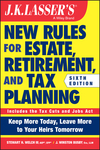Selling a Home When a New Baby Comes Along
Homeowners can exclude gain on the sale of their principal residence up to $250,000 ($500,000 on a joint return); for many homeowners this means tax-free sales proceeds. However, to claim this break, you must have owned and used the home as a main residence for at least two of the five years preceding the date of sale. What if something unexpected happens that prevents you from staying put for two years? There may be partial tax relief.
Unforeseen circumstances
The tax law lets you prorate the exclusion amount if you're forced to sell before meeting the two-year test. Events that count for this purpose include:
- Changes in employment and self-employment
- Changes in health
- Unforeseen circumstances
The IRS is rather liberal in deciding what events can be viewed as unforeseen circumstances. Recently, a couple with a 10-year old child bought a three bedroom, one and a half bath home, and used one of the bedrooms as a home office. The wife became pregnant and the couple tried to make do in their home but needed to find larger quarters (they found a three bedroom, two bath home with additional space that could be used as a home office).
The IRS ruled that this pregnancy is an unforeseen circumstance entitling the couple to prorate the exclusion amount.
Prorated exclusion can shelter all of the gain
Proration means that the dollar amount of the exclusion is apportioned for the part of the two-year period satisfied by the homeowners. For example, if a couple sells after owning and living in the home for 18 months, they can use three quarters of the $500,000 exclusion, or $375,000. In today's housing market, few if any homeowners will have a gain in an 18-month period exceeding this prorated exclusion amount.
Qualified tuition program (QTP)
A state-sponsored college savings plan or prepayment plan, or a prepayment plan established by a private college.



